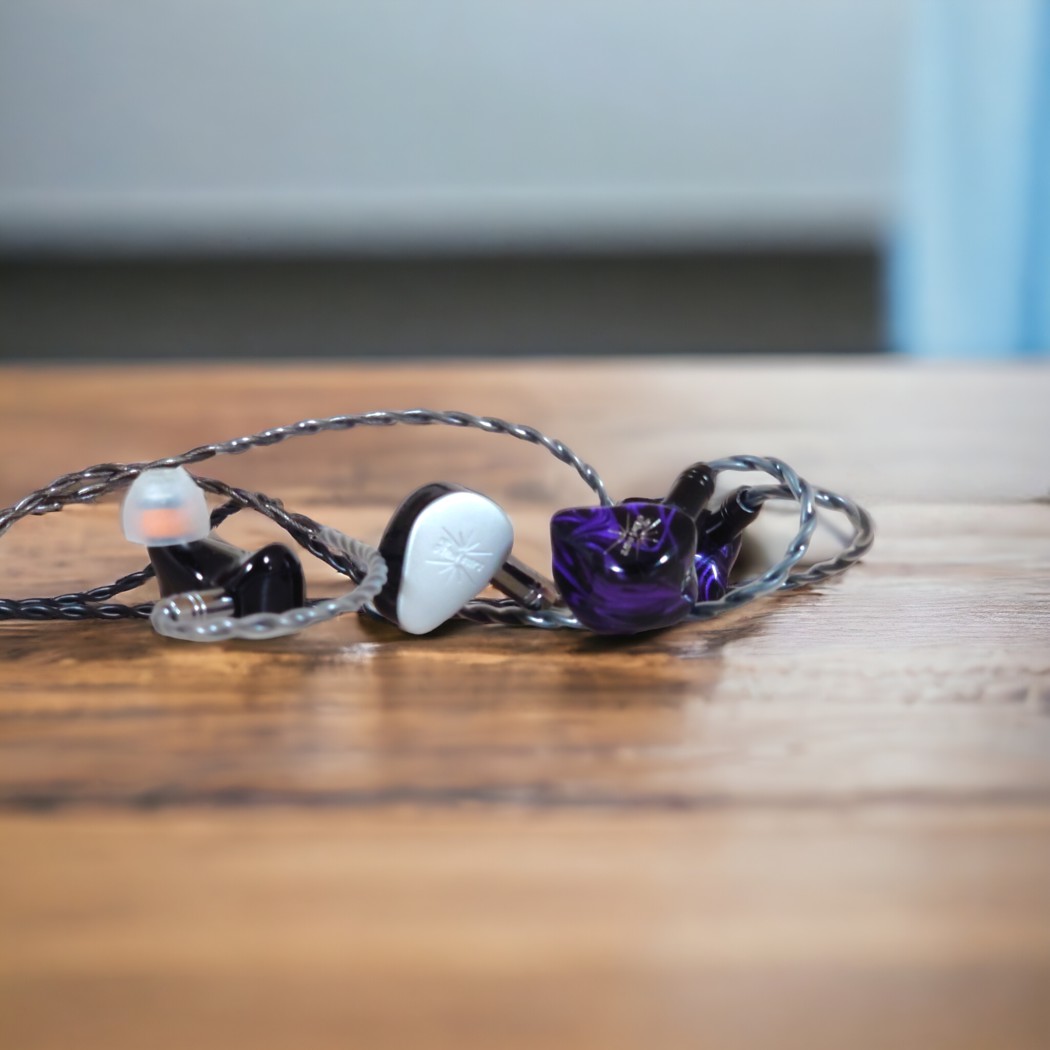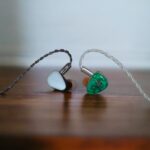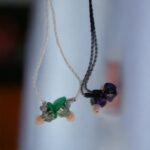The Kiwi Ears Quartet and Quintet are two popular multi-driver IEMs from Kiwi Ears, a Linsoul sub brand. They offer different sound characteristics and are priced at 109 and 219 USD at the time of writing.
Price-wise, the Quartet sits between the lower-end offerings (Dolce, Cadenza, Forza and Melody) and the higher end Quintet in the expanding Kiwi Ears lineup. We have reviewed the Cadenza and the Quartet earlier.
Unlike the Cadenza and Quintet, which are tuned close to “Harman-curve-neutral”, the Quartet is designed to have a rather not-so-neutral sound signature. With the dip switches in stock settings, it’s got a V-shaped signature with more energy in the lows and highs. The bass especially stands out: If the tracks you listen to have bass, you’ll hear it. It is, however, not boosted in a bloated way. This is high-quality bass.
The Kiwi Ears Quartet is a 4-driver IEM with a proprietary double dynamic driver to handle the bass. Two balanced armatures take care of the rest of the spectrum. The Quartet have a rather large housing for the 4 drivers but is light and comfortable.
There are two dip switches on the Quartet. They adjust the bass and treble up and down. In stock configuration, they are both set in the “up” position, which gives a V-shaped frequency curve/sound signature. That’s how I prefer the Quartet, and that’s what I will compare the Quintet to in this article. You can read more about this in my Quartet review here.
The Quintet has, as the name suggests, 5 drivers per side. There are 4 different types of drivers: 1 Diamond-Like Carbon (DLC) dynamic driver, 2 balanced armature (BA) drivers, 1 planar magnetic driver, and 1 piezoelectric (PZT) bone conductor.
The large 10mm DLC driver works as the subwoofer while the two Knowles balanced armature drivers take care of the midrange. For the treble, Kiwi Ears has introduced a new 5mm planar tweeter system in the Quintet. Finally, to give extra air and micro detail to the treble, the Quintet features an extra tweeter in the form of a piezoelectric bone conductor driver.
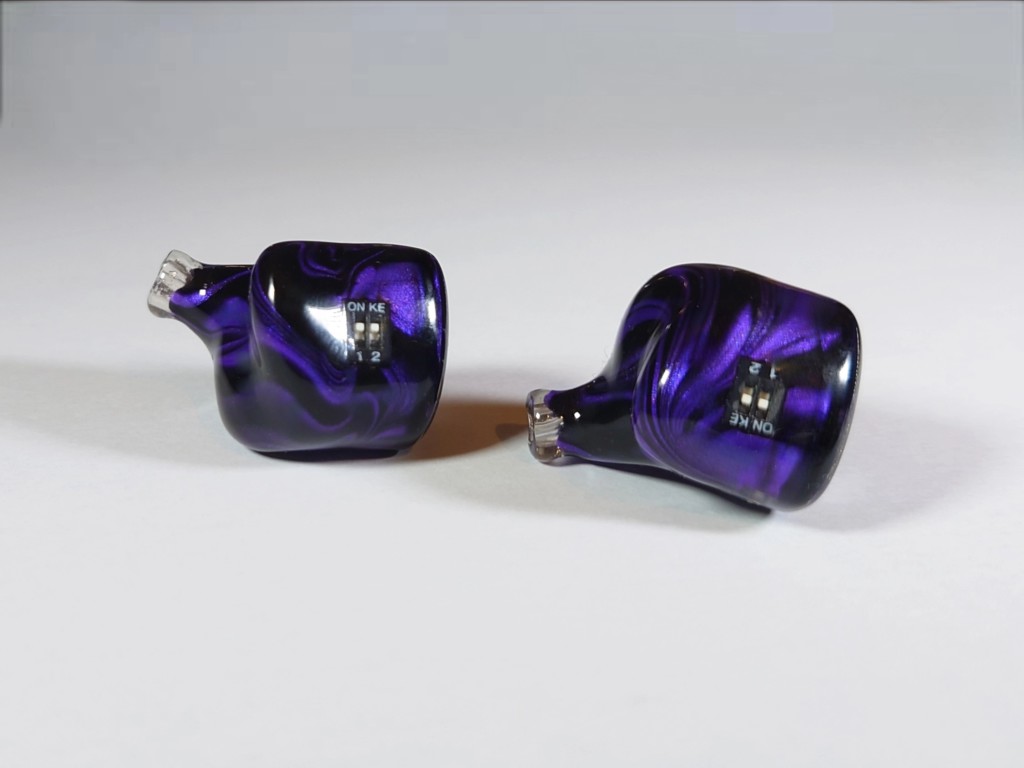
KIWI EARS QUARTET SPECIFICATIONS
- 4 drivers per side: 2 x 10mm Dynamic Drivers, 2 x Custom Balanced Armatures
- Sensitivity: 110db APL/mW
- Impedance: 32ohm
- Housing: Medical-grade resin
- Cable: 1.2 m oxygen-free silver-plated copper
- Cable plug type amp: 3.5mm
- Cable plug IEM: Detachable 0.78mm 2 Pin
- Included tips: 3 x 3 pairs of silicone tips (3 types in 3 sizes) nozzle fits most 3rd party tips.
- Tuning switches: 2 with 2 positions each enabling adjustment of treble and bass in 4 possible configurations. Tool included.
- Carry pouch included
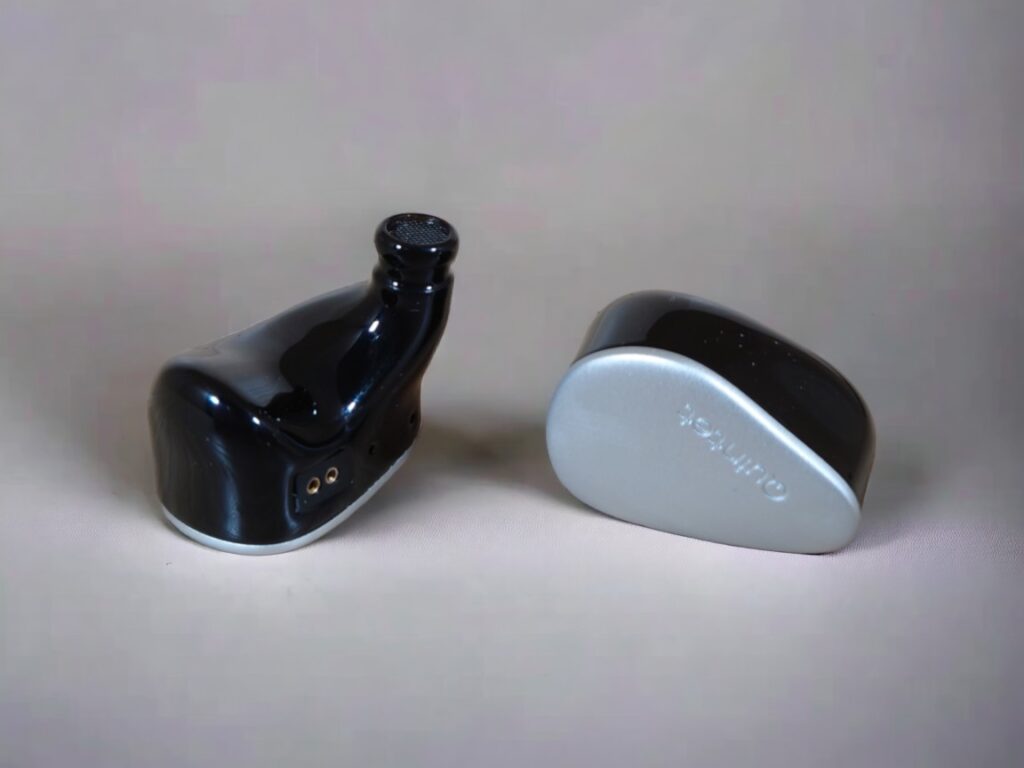
KIWI EARS QUINTET SPECIFICATIONS
- 5 Drivers per side: 1 Diamond-Like Carbon (DLC) dynamic driver, 2 balanced armature (BA) drivers, 1 planar magnetic driver, and 1 piezoelectric (PZT) bone conductor
- Impedance 32 Ohms
- Sensitivity: 106 dB
- Included cable: 1.2 Meters, High-quality Oxygen-free Silver-plated Copper Cable
- Cable plug type amp: 3.5mm
- Cable plug IEM: Detachable 0.78mm 2 Pin
- Tips: Silicon type, 3 sizes, 2 types
- Carrying pouch included
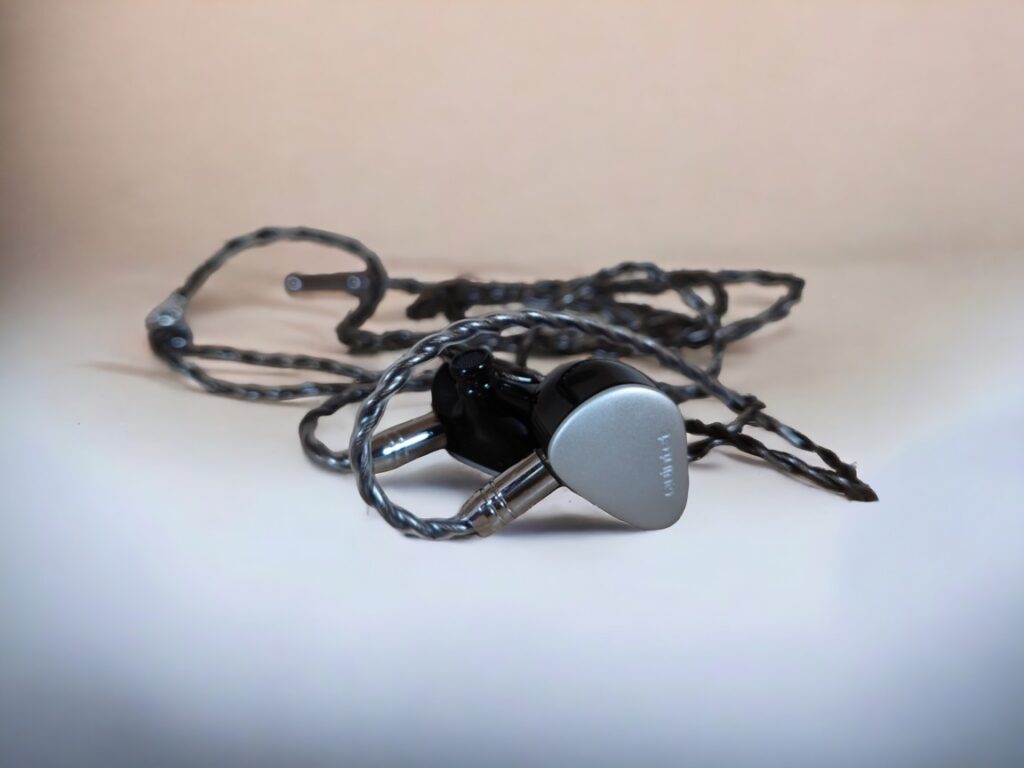
COMPARISONS
Amplifier: Topping A90. Source: RME ADI-2 DAC FS
Janacek, String Quartet no. 1 by Emerson String Quartet
The Kiwi Quartet sounds very good; energetic and full-bodied. The strings have lots of texture and energy. The Cello really has some nice deep notes that really feel physical. The Quintet sounds quite different. It’s more neutral, there’s more fine detail. However, I miss some of that extra full-bodied feel of the Quartet. I really enjoy both.
10:15 On A Saturday Night by The Cure
Sounds very nice on the Quartet. The bass is very powerful, it sounds like you have two small subwoofers in your ears – which you actually have. It’s bordering on too much, but not quite. The treble is it’s nice and smooth, the mids too.
With the Quintet, the most striking difference is in the bass. It’s a lot tighter, with more texture and detail. It’s less bloomy and not dominant. The treble also has more detail. The soundstage and imaging are similar, but the Quintet is more airy and open sounding.
Akka-Safad by Faraj Suleiman
Palestinian pianist Suleiman with a playful and fun piece together with a bass player and a percussionist. The bass is so tight and punchy with the Quintet that it’s almost unreal. Everything else is snappy, crisp and fast. It’s a fun and precise-sounding delivery.
The Quartet starts out with a smooth and pleasant piano. When the bass enters, it’s again a very strong bass. The Quintet is more detailed across the board. Soundstage and Imaging are relatively similar, but the Quintet has more air and is a bit more open sounding, with better imaging.
As Before by Olga Konkova
The Quartet is delicious in its rendering of the vocals and the piano. Percussion is snappy. The cajon drum hits really hard and deep – the bass really comes to its right.
With the Quintet, I miss the extra bass now, but again it is much tighter and detailed. The vocals and the piano are nicely done, but in a little more clear and crisp way rather than the more smooth and organic presentation of the Quartet. The Quintet is generally more detailed.
Black Crow by Cassandra Wilson
The bass on the Quintet is tight and extremely detailed. It’s close to perfect. The vocals are smooth and have a good amount of texture, the percussion is very snappy.
With the Quartet, the vocals are warmer and fuller sounding, smoother and lusher. The bass has a little bit more quantity and it’s not as tight. The treble is not as detailed, there is less air and less space between instruments.
Hail, Hail by Pearl Jam
This song separates the two quite a bit. As always, the bass quality of the Quintet is stunning. The amount of detail and texture presented in the lower regions is impressive. Fuzz guitars are energetic sounding, there’s good layering and separation.
The Quartet on the other hand sounds a bit muffled. It’s generally smoother, but in the wrong way. The bass has a similar quantity but isn’t as detailed. The soundstage feels a bit closed-in with significantly less instrument separatIon.
Higdon: Violin Concerto – Fly Forward by Hilary Hahn
Starting with the Quintet, the strings and wind instruments have a lot of energy. They’re crisp and clear, upfront and has some bite.
The Quartet is also very nice. It’s smoother, there’s not as much detail but it is still a very nice listen with great dynamics and some significant low-end rumble.
It Could Be Sweet by Portishead
This sounds very good on the Quartet, the bass is very nice, not overdone in my opinion. The midrange is warm, lush and delicate. The sound is dynamic and engaging. The Quintet sounds good too. It’s lighter and brighter, there’s less body and tonal weight, the bass is drier, and the vocals are crisper.
AMPLIFICATION
Desktop
The Topping A90 desktop amplifier obviously has the power to drive these IEMs well. It’s a very neutral-sounding amplifier. I find that the Quintet pairs even better with slightly warmer-sounding amps, like the Rebel Amp or the Fiio K5. Also, the Schiit Magni Heretic and the amp on the RME ADI-2 DAC FS sound great. Actually, all those desktop amps seem to sound a bit warmer than the A90, in a preferable way.
The Quartet sounds good with all the amps mentioned.
Portable
Starting with my Poco F5 (2023) phone, they both sound very good straight from the headphone jack (yes it has got a 3.5mm output). Actually, it sounds remarkably good. I didn’t expect it to sound this good. With the THX Onyx, the sound gets a bit tighter and I have to adjust the volume because it has more power. However, my F5 phone is really close. That’s impressive because the Onyx is really good for a dongle. The Xduoo Link 2 also sounds good.
There is no doubt, however, that the desktop setups sound better than the portable options. A great DAC and amp aren’t wasted on these, even though they both sound already very good on the portable options tested.
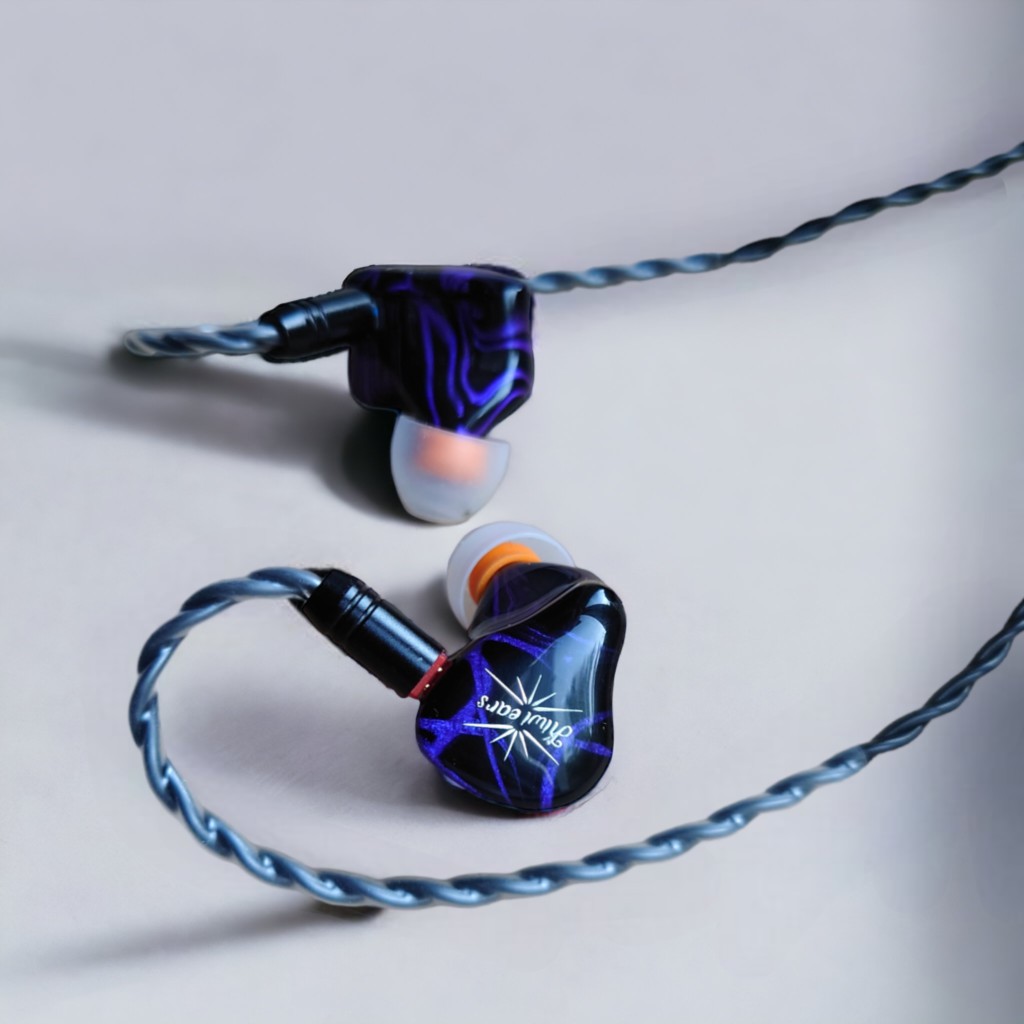
WRAPPING IT UP
Sound Signature, Soundstage and Imaging
The Quintet is a bit brighter with a more pronounced upper midrange, and less bass on most tracks. It’s sharper, crisper, tighter and clearer, the Quartet is smoother, a bit more laid back and lush with a more meaty sound. The Quintet has a bigger soundstage with more air, better separation, layering and imaging. The Quartet is not bad in these regards, but the Quintet is better.
Treble
The Quartet has a very nice treble. It’s quite smooth but very present with good sparkle. However, the Quintet is even better and has significantly more detail and air.
Midrange
The mids are crisper, more energetic, dynamic and upfront with the Quintet, they are warmer and smoother on the Quartet. With the Quintet, there’s more obvious texture and raw detail, with the Quartet, there’s a bit more flesh and body.
Bass
The bass is the main selling point of the Quartet. It’s plentiful, sometimes a bit too much in the standard configuration of the tuning switches. However, most of the time it presents a welcome and fun low-end rumble. And it can be reduced with a dip switch – feel free to read more on that in my separate Quartet review here.
As good as it is on the Orchestra, however, the bass is just fantastic on the Quintet. It’s so well-balanced, tactile, dynamic, textured, detailed and layered. Despite the quantity being less in some frequency ranges than that of the Quartet, it feels physical in a way I cannot recall from any other IEM I’ve heard. It never becomes too strong, it’s mostly just very, very right.
Dynamics
Both headphones are very good at macro dynamics. The Quartet is very dynamic in the bass, but also the treble is quite lively. The mid-range is rather smooth, though.
The Quintet, however, has good macro-dynamics across the board as well as excellent micro-dynamics. There’s more tonal contrast on the Quintet than with the Quartet.
Amplification
They both sound good with modest sources like a phone or USB dongle but scale well with better sources, and a nice desktop setup isn’t wasted.
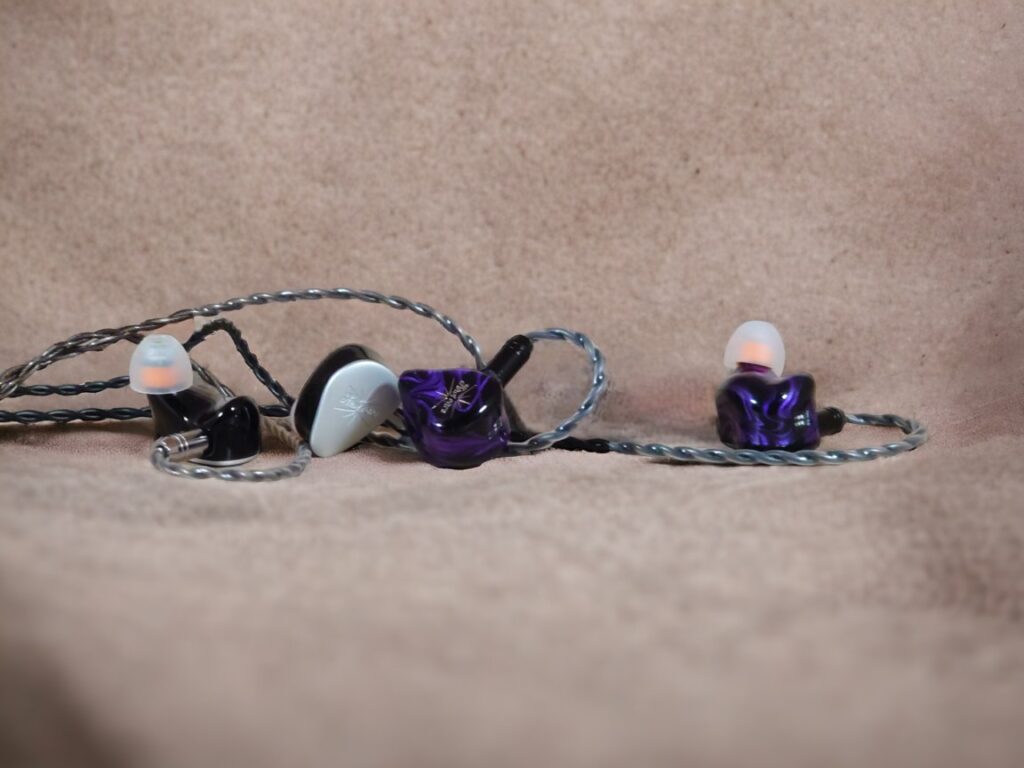
CONCLUSION
The Kiwi Ears Quintet has lots of detail, an open soundstage and a neutral and well-balanced sound profile where no part of the frequency spectrum feels exaggerated or recessed. The bass is exceptionally well-balanced, detailed and punchy, without getting bloomy or dominating the mix.
The Quartet also has a remarkable bass. It’s significantly higher in quantity, especially deep down. The Quintet has a rather linear bass response, the Orchestra is boosted. On some tracks this will be really noticeable, on other tracks it won’t. You can, however, use the dip switch to adjust the Quartet’s bass.
The Kiwi Ears Quartet and Quintet are different flavours: The Quartet is in its stock form quite bassy and has a warmer presentation with a smooth midrange and energetic treble. It’s what one could call a “fun” tuning. The Quintet aims for neutrality and precision. It’s sharper cut and presents the music in a clearer, brighter and more upfront way with more air, detail and subtleties.
You can check out the Quartet and Quintet here:
Any purchase you make on Amazon or Linsoul with any of our affiliate links will give us a small provision at no cost to you.
We only get a provision for items that are not returned, so there’s no incentive for us to recommend something that’s not good.
Linsoul : Headphones, Earbuds, Wireless Earbuds, Desktop DAC/AMP, Portable DAC/AMP, Digital Audio Players,
Amazon: Headphones, IEMs, Headphone Amplifiers, Home Audio or Anything else.
.
If you enjoyed this article or other content on The Headphoneer, you might consider leaving a small donation to keep this website up and running. No donation is too small. Thanks for supporting us!
If you like our work please follow us on Instagram, Facebook and Twitter , it will help us grow. Sharing is caring 🙂
.
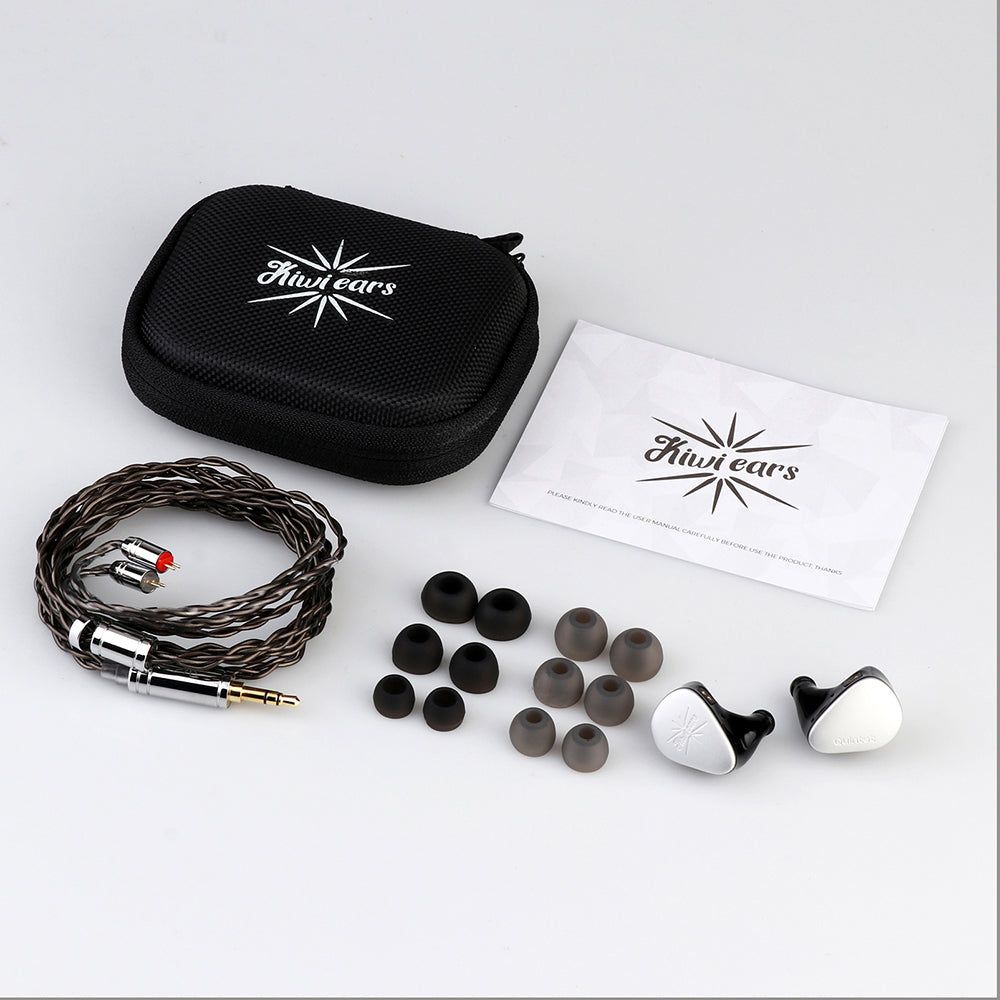
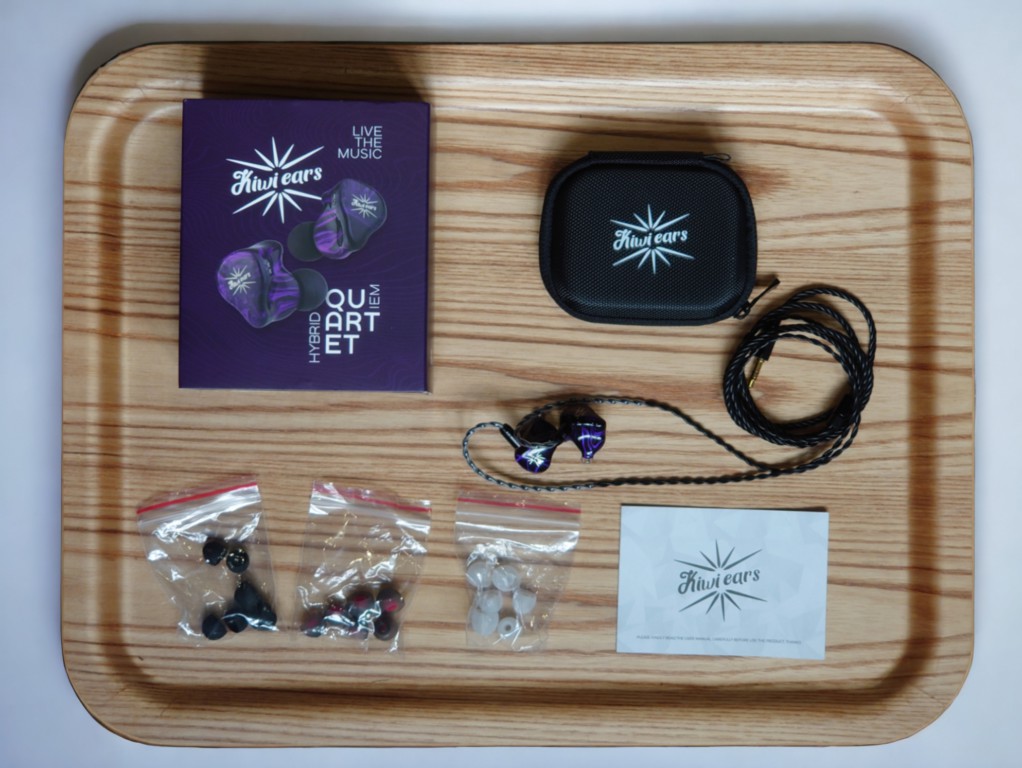
.


